Spirea oak-leaved: description and secrets of cultivation
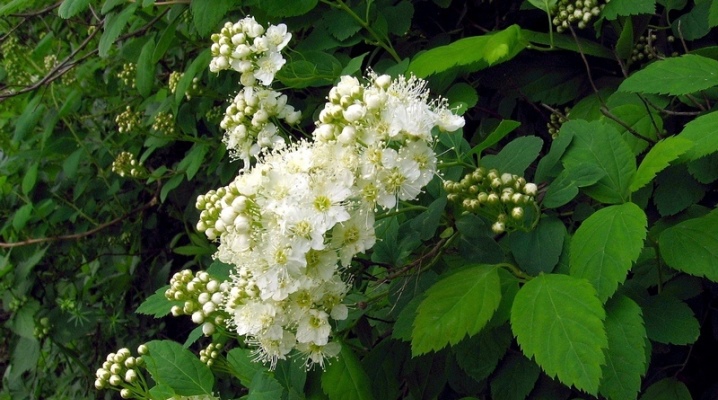
Shrubs are able to delight gardeners with their beautiful buds at different times of the year. These representatives of the flora include spirea or meadowsweet. Oak-leaved spirea blooms earlier than others, so it is a popular resident of backyard plots.
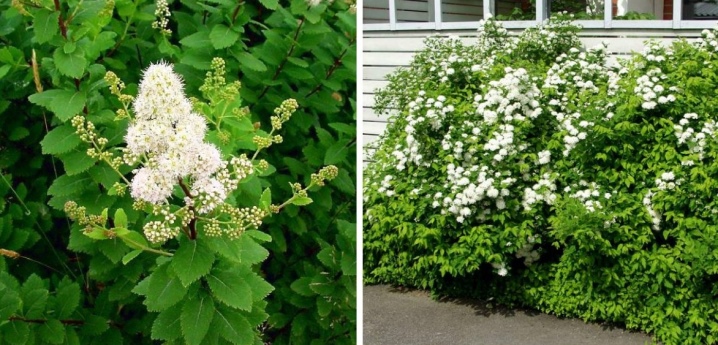
Description
This unpretentious representative of the flora is widespread, the range of the northern regions is no exception. The homeland of culture is considered to be the central part of Russia. In the wild, oak-leaved spirea can be found infrequently, usually it is grown on a private territory.
Spiraea chamaedryfolia can grow to a height of 200 centimeters. It is characterized by long shoots that descend from top to bottom. The crown of the bush is lush, rounded. During the flowering phase, small white flowers appear on the plant, they are collected in beautiful inflorescences in the amount of 2 dozen pieces. Oak-leaved spirea can please with flowering throughout May.
The foliage of this representative of the flora is oblong, has notches. The color of the leaves in the upper part of the plate is usually rich green, and in the lower part it is gray. Their sizes usually range from 40 to 45 millimeters. In the fall, fruits are formed on the branches of Spiraea chamaedryfolia, and the foliage turns red, yellow and orange.
This type of spirea belongs to the winter-hardy, it is often used to eliminate the gas pollution of city air.

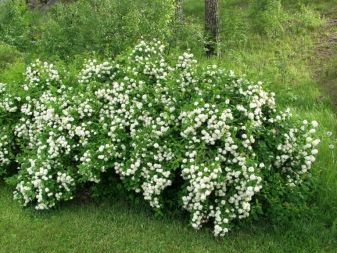
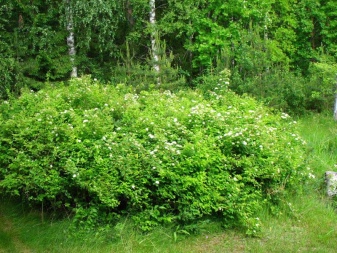

Reproduction and planting
Oak-leaved spirea reproduces with the help of seeds, petioles and cuttings. Seeds must be planted in early spring using containers filled with fertile soil. After the seedlings become strong, they can begin to be planted in open ground, while pinching the main root. Thanks to this technique, the root system of the shrub is strengthened and fully developed. The rapid growth of the plant contributes to the fact that in the first 12 months of life, the spirea grows to 0.1 meters.
The optimal period for propagation of Spiraea chamaedryfolia is mid-June. For reproduction, it is worth choosing branches with a semi-lignified trunk and a length of more than 10 centimeters. It is recommended to dip the tips of the planting material into the Kornevin solution. At the end of the procedure, the cuttings can be planted in the soil. The gardener can expect that by the fall the culture will have a strengthened root system.
To propagate the spirea using layering, it is worth using flowering branches that grow in the lower part of the bush. Shoots should be bent to the soil, secured, and then sprinkled with substrate. A flower grower should not forget about regular moistening of the plantation. After rooting, the cut can begin to separate from the mother and transplant.
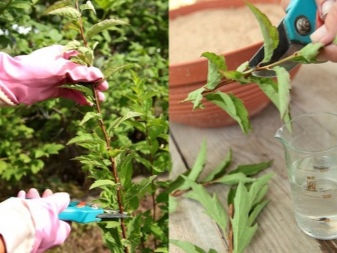
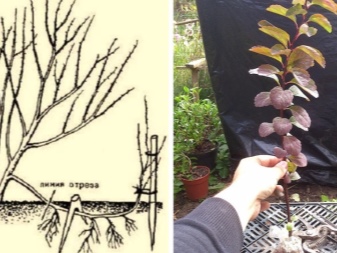
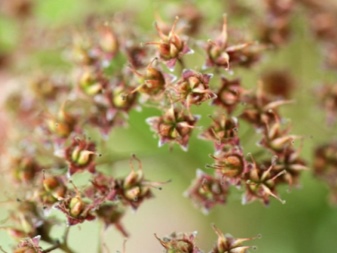

If you want to plant a culture in a permanent place in the fall, you should start preparing the planting pit. To do this, dig a hole about 0.5 meters deep. The bottom of the pit is filled with broken brick or expanded clay, which will serve as drainage. The rest of the hole is filled with fertile soil, which should include peat, sand and turf soil.
When planting a plant, its neck should remain on the surface. It is better to plant an oak spirea in a sunny open area, it is possible with a little shade.
This representative of the flora responds perfectly to transplantation and reproduction and already at the 4th year of life is able to delight others with its flowering.
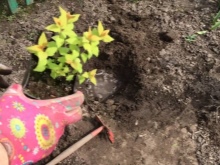
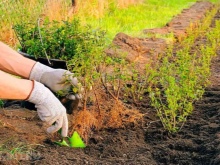
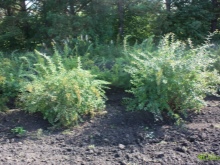
Care
Despite the fact that the oak-leaved spirea is an unpretentious representative of the flora, it still needs to follow certain rules of care.
Watering and fertilizing
During rainy weather, the plant does not need additional irrigation. In the dry summer season, the shrub should be watered twice every 30 days. One irrigation procedure usually takes about 12 liters of liquid. At the end of irrigation, the soil near the shrub should be loosened and mulched. Do not allow water stagnation near the roots.
During loosening, you need to be quite careful, since the root system is located close to the earth's surface and can be easily damaged. Spiraea chamaedryfolia is fertilized during spring and summer.
In the spring, the plant should be fed with a mineral complex fertilizer, and in the summer - with a dissolved mullein.
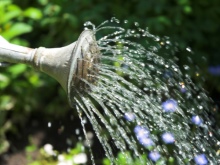
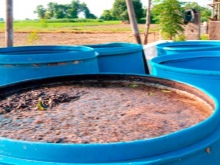
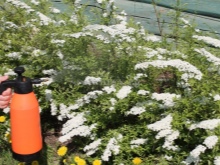
Pruning
To preserve the decorative form of the oak-leaved spirea, as well as to prevent the occurrence of diseases, it is worthwhile to carry out regular sanitary pruning on it. The procedure is carried out in the summer after flowering. Do not forget that this representative of the flora needs pruning every year.
Sanitary pruning involves removing dried, broken, and deformed twigs. It is also worth shortening very long and outdated shoots. At the end of the procedure, the branches should be no more than 25 centimeters in length.
Gardeners should remember that it is forbidden to prune branches immediately after the flowering phase. Otherwise, the growth of lateral shoots is activated, the shrub will stop blooming and take on an ugly shape.
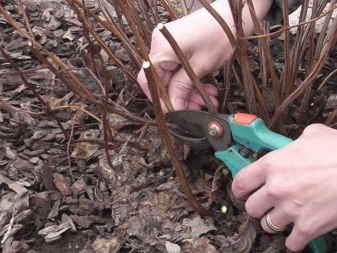
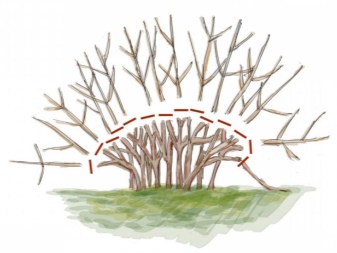
Preparing for the winter period
Spiraea oak-leaved belongs to frost-resistant plants. However, the plant should be prepared in advance for cold weather and severe frosts. In this case it is worth insulating the rhizome of the culture by laying a spruce, bark or fallen leaves around the trunk of the shrub.
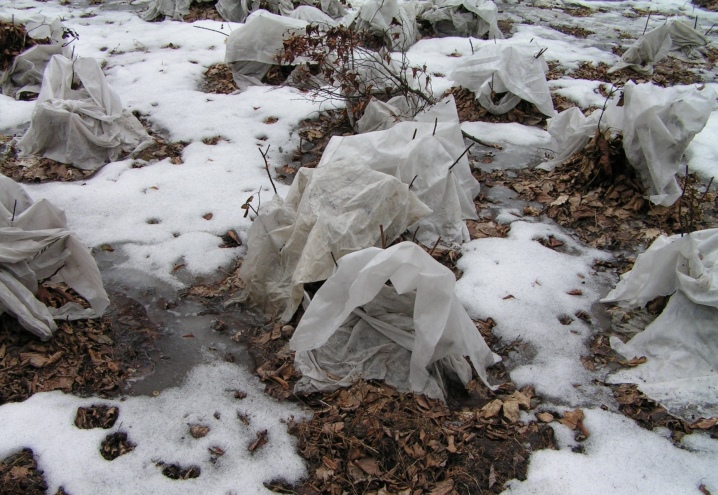
Pest and disease control
The most common parasites that attack the culture are aphids, leafworms, and spider mites. They are especially active in damaging shrubs from June to August. When twisted foliage and cobwebs are found on the branches, we can talk about an attack by a spider mite on a spirea. As a preventive measure, it is recommended to carry out sanitary pruning of oak-leaved spirea. The affected branches should be carried away from the garden area, and then burned.
In order to prevent the spread of a fungal infection in the root system of a culture, it is worth constantly loosening its near-stem circle. Such an event prevents fluid stagnation and the appearance of fungus. To treat the plant, it is worth using specially designed chemicals.
Spiraea chamaedryfolia is recognized as a beautiful ornamental representative of the flora, therefore it is often used in the design of territories. This plant is often used by landscape designers. The shrub looks great next to coniferous and deciduous trees. Spirea is a worthy option for a flowering hedge.
Spirea oak-leaved is able to decorate any private area, as well as a park area. Every novice gardener can grow an unpretentious plant.
According to the reviews of people who grow Spiraea chamaedryfolia on their territory, it can be concluded that this representative of the flora is characterized by decorative qualities and is easy to care for, since it rarely suffers from ailments and attacks of parasites.
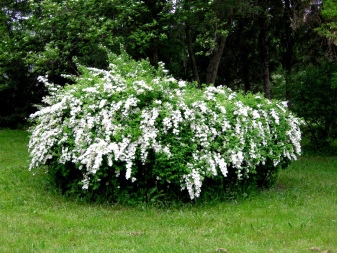

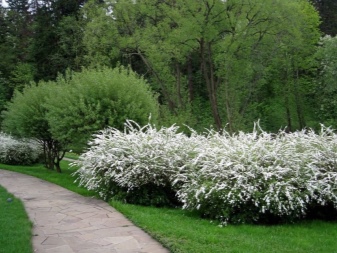
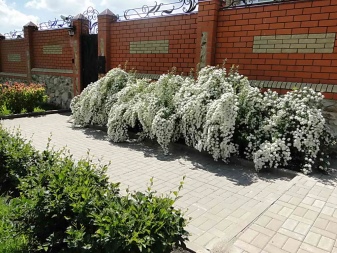
How to properly plant a spirea, see the next video.



































































The comment was sent successfully.